| Weight | 1500 g |
|---|---|
| Material Used | Woolen felt, leather chin strap, Regimental cap badge as requested. |
Gurkha Pee Cap
It is now one hundred years since the fore-runner of Hats, Felt, Gurkha, which has become synonymous with the Gurkha soldier, was first introduced into Gurkha Regiments for field service wear. The hat went on to be worn by Gurkha units on the frontiers of India and in all the operational theatres during both World Wars. Today, it is worn by Gurkha units of the British and Indian Armies, the Nepalese Army and the many Gurkha police and security units that have been raised around the world. In The British Army, it is no longer worn in the field and its wear is now primary confined to parades and ceremonial duties.
$54.00
It is now one hundred years since the fore-runner of Hats, Felt, Gurkha, which has become synonymous with the Gurkha soldier, was first introduced into Gurkha Regiments for field service wear. The hat went on to be worn by Gurkha units on the frontiers of India and in all the operational theatres during both World Wars. Today, it is worn by Gurkha units of the British and Indian Armies, the Nepalese Army and the many Gurkha police and security units that have been raised around the world. In The British Army, it is no longer worn in the field and its wear is now primary confined to parades and ceremonial duties. The origins of Hats, Felt, Gurkha date from the beginning of the 20th Century when a substitute form of head dress was being actively sought to replace the Kilmarnock Hat for wear on field service. The Kilmarnock, which had been adopted during the second half of the 19th Century and had become the universal head dress of Gurkha Regiments, had very little to commend it when worn in the field.
It neither gave protection from the burning sun nor the heavy monsoon rain. Over the years, a number of modifications had been made to it both by the authorities and individual battalions. In 1864, the Adjutant-General’s Department in India had sanctioned khaki covers for wear on field service1. Later a flap was hooked on to the cover at the back of the Kilmarnock to protect the neck from the sun. When 4th Gurkhas went to China in 1900 following the Boxer Rebellion, a wired brim, narrow in front and wide at the back, was fitted over the Kilmarnock as protection from the sun2. During the 2nd Afghan War of 1878-80, 3rd Goorkhas had for a time worn a puggaree. This drew derision from 2nd Goorkhas, because in Nepal the puggaree was viewed as being the outward sign of a man from the plains3. Nevertheless, following the Tirah campaign on the North West Frontier in 1897, 2nd Goorkhas also considered replacing the Kilmarnock with the puggaree for wear by both British officers and Gurkhas. The main object appeared to be not so much to give protection against the elements, but rather to make it more difficult for rebel tribesmen to pick off British officers. The proposal did not, however, find much favour and this form of head dress was not adopted4.
At the time of the 2nd Boer War in South Africa, the slouch hat, worn by the Dominion Forces of the British Empire, was becoming an increasingly popular form of head dress with British troops in the field. This may have influenced the introduction of a hat of similar design within Gurkha Regiments. It was during the Waziristan Blockade in 1901, that the 1st Battalion 2nd (Prince of Wales’ Own) Gurkha Rifles tried out a new hat advocated by one of its officers, Lieutenant Bechar. It consisted of a several layers of cloth covered on both sides with puttoo or home spun tweed. It was criss-cross machine stitched, giving it a certain amount of stiffness to help maintain its shape. Sometimes known as the Kashmir hat, it was fitted with a light puggaree, ventilating holes and a chin strap. The whole effect resembled a slouch hat, affording protection both from the sun and the rain. 2nd Gurkha Rifles subsequently adopted the hat for field service.
Regimental histories record that a similar head dress was introduced into other Gurkha Regiments during the same period. Initially procured from unofficial sources, it was eventually sanctioned by Army Headquarters and issued through ordnance channels under the nomenclature of Hats, Felt, Gurkha5. The Tibet Expedition 1903-04 became the last campaign when the Kilmarnock was worn in the field by 8th Gurkha Rifles operating at altitudes in excess of 18,000 ft. Thereafter, the Kilmarnock has only been worn on parades and ceremonial duties. The Zakka Khel Expedition, on the North West Frontier of India, in 1908 was the first campaign when the new field service head dress was worn by 5th and elements of 6th Gurkha Rifles.
Not unexpectedly, Regiments and Battalions soon began to fashion the hat to their own designs. Some wore it with either the left or right side hooked up; puggarees were added, with Regimental coloured piping; and Regimental badges and or flashes were incorporated. In the years following the 1st World War, the brim became flat and stiffened, as we know it today, and the hat was worn well tilted over one ear and a size or two smaller than necessary for effect. This laid most of the skull bare to the elements, thereby defeating the original object of the hat to give protection from the sun and rain6. Initially, Hats, Felt, Gurkha were only worn by Gurkha officers and soldiers, but photographic evidence suggests that British officers began to wear the hat in the 1920s. By the end of the 2nd World War, the hat was being worn by all ranks in most Gurkha Regiments.
Only logged in customers who have purchased this product may leave a review.

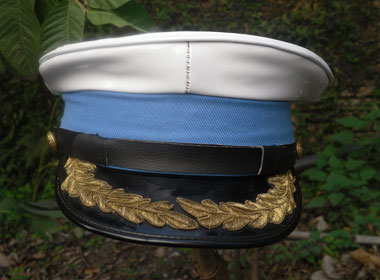
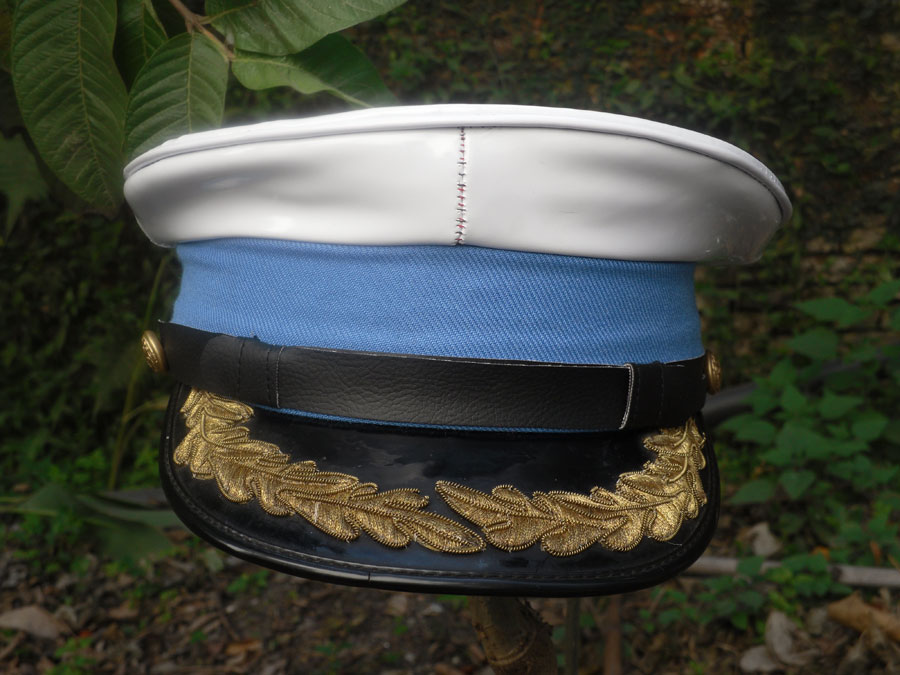
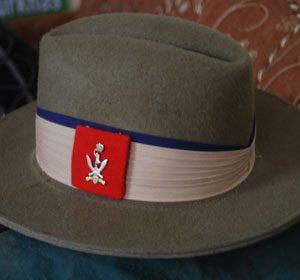
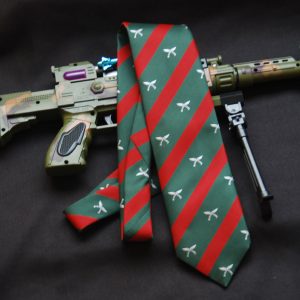
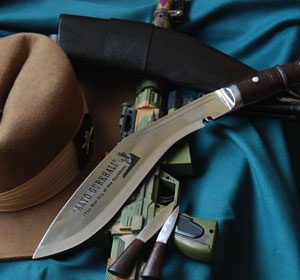
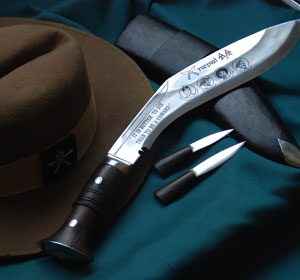
Reviews
There are no reviews yet.